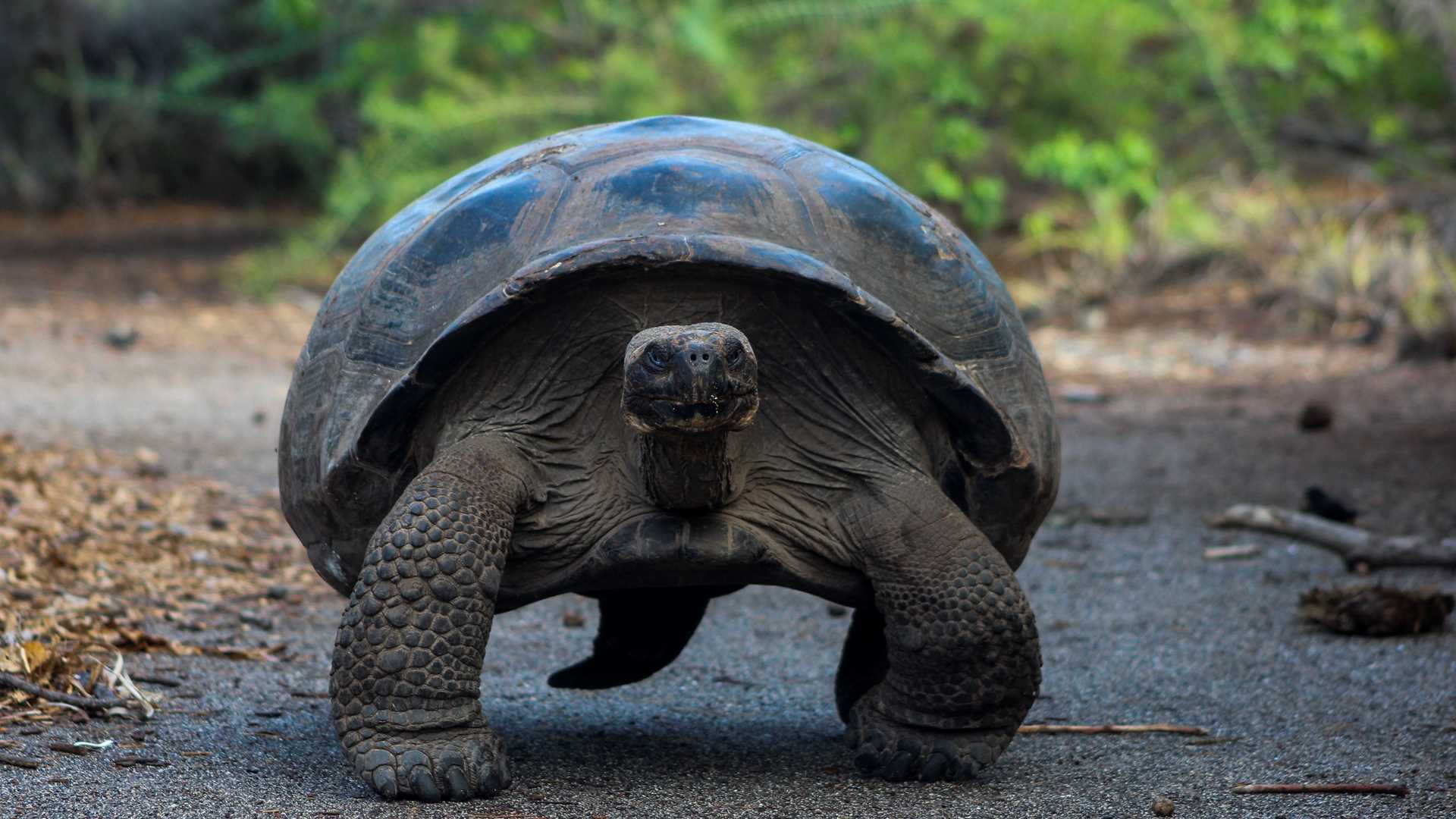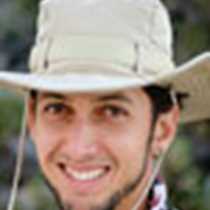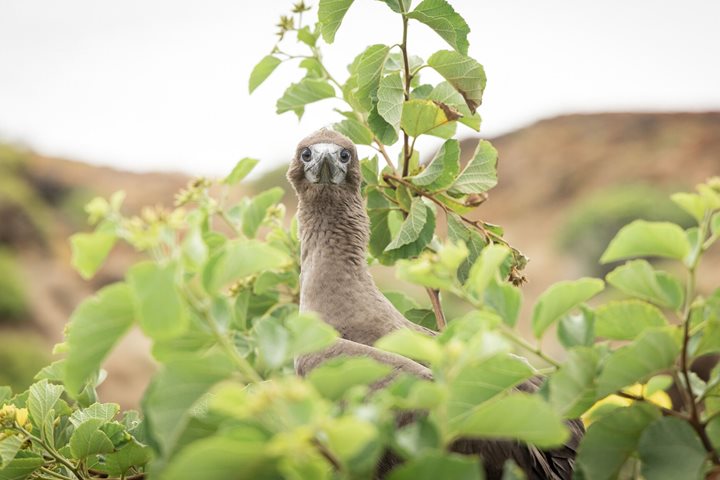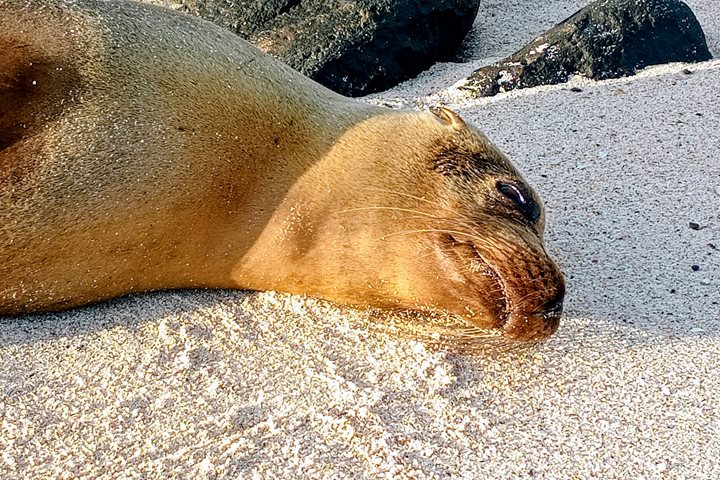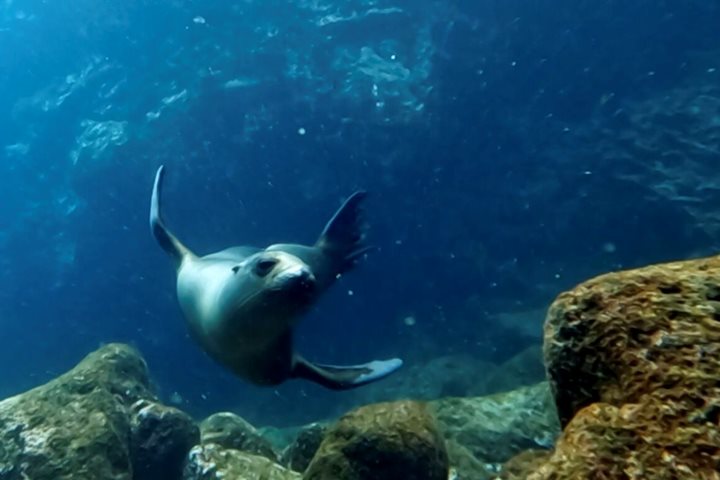We started the day early, when the mist over the surface of the water was still around. At low tide, Urbina Bay’s rocky shoreline exposes the dramatic shapes of the uplifted area that was once covered with coral and other forms of life. The water is full of sea turtles that nest on the black sand beach where we disembarked. We explored inland and walked through a green forest that is kept alive thanks to the uplifted soil of the area. As soon as we started the hike, we spotted the highlight of our morning, the giant tortoise. The species we got to meet belongs to Alcedo Volcano. We also saw Galapagos land iguanas basking in the sun in the middle of a trail.
In the afternoon, we went to Tagus Cove, a sheltered, rocky bay where penguins and cormorants nest. Our groups explored the area by kayak, Zodiac rides, and snorkeling. A quick rain shower refreshed the hot afternoon. To end our day, we hiked to a hilltop where we were rewarded with views of a beautiful sunset and the volcanic landscape.

